BMW 2 Series vs Dacia Spring – Differences & prices compared
Compare performance, boot space, consumption and price in one view.
Find out now: which car is the better choice for you – BMW 2 Series or Dacia Spring?
The BMW 2 Series (Coupe) comes with a Diesel MHEV or Petrol engine and Automatic transmission. In comparison, the Dacia Spring (SUV) features a Electric engine with Automatic transmission.
When it comes to boot capacity, the BMW 2 Series offers 390 L, while the Dacia Spring provides 308 L – depending on how much space you need. If you’re looking for more power, decide whether the 374 HP of the BMW 2 Series or the 65 HP of the Dacia Spring suits your needs better.
In terms of consumption, the values are 4.90 L per 100 km for the BMW 2 Series, and 13.20 kWh for the Dacia Spring.
Price-wise, the BMW 2 Series starts at 45200 £, while the Dacia Spring is available from 14500 £. Compare all the details and find out which model fits your lifestyle best!
BMW 2 Series
The BMW 2 Series embodies a perfect blend of dynamic performance and sporty elegance, making it a popular choice among driving enthusiasts. With its impressive handling and sophisticated design, it captures the essence of a modern compact coupe. Inside, the 2 Series offers a luxurious and driver-centric cabin equipped with cutting-edge technology, ensuring both comfort and connection on every journey.
details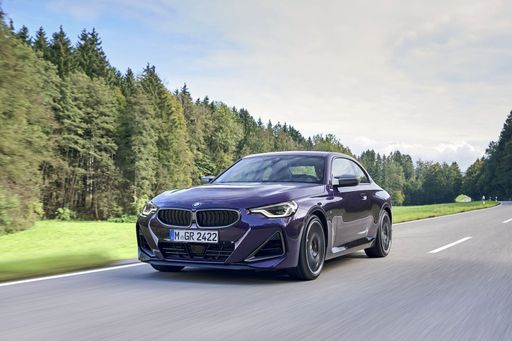 @ press.bmwgroup.com
@ press.bmwgroup.com
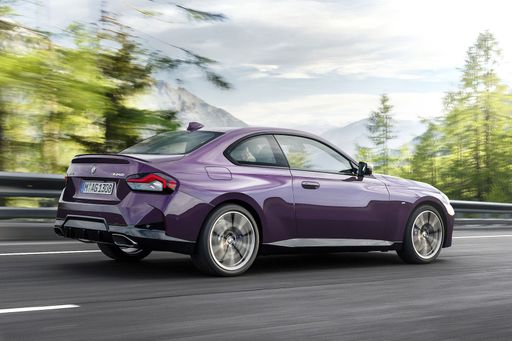 @ press.bmwgroup.com
@ press.bmwgroup.com
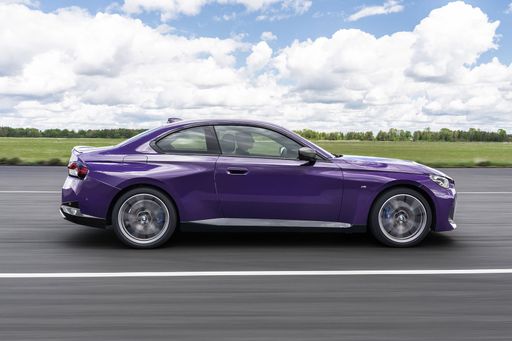 @ press.bmwgroup.com
@ press.bmwgroup.com
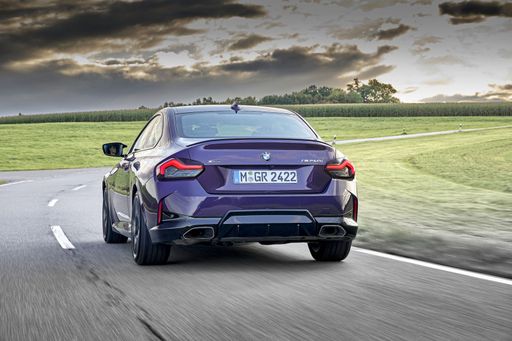 @ press.bmwgroup.com
@ press.bmwgroup.com
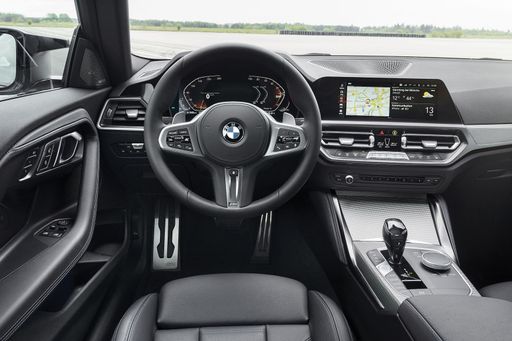 @ press.bmwgroup.com
@ press.bmwgroup.com
Dacia Spring
The Dacia Spring stands out as an affordable and environmentally friendly option in the electric vehicle market, combining practicality with a compact design ideal for urban settings. Its minimalist interior, while basic, provides all the essential features needed for a comfortable drive, reflecting its cost-effective approach. The vehicle's performance suits city driving, making it an appealing choice for those seeking an entry-level electric car.
details @ dacia-presse.de
@ dacia-presse.de
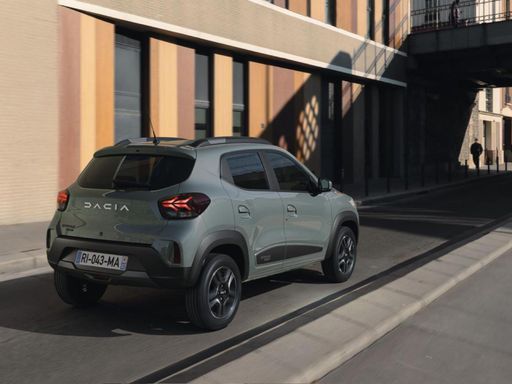 @ dacia-presse.de
@ dacia-presse.de
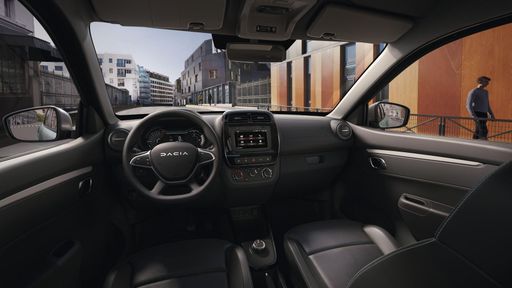 @ dacia-presse.de
@ dacia-presse.de

|

|
|
|
|
Costs and Consumption |
|
|---|---|
|
Price
45200 - 55600 £
|
Price
14500 - 17100 £
|
|
Consumption L/100km
4.9 - 8.1 L
|
Consumption L/100km
-
|
|
Consumption kWh/100km
-
|
Consumption kWh/100km
13.2 - 14.1 kWh
|
|
Electric Range
-
|
Electric Range
225 - 228 km
|
|
Battery Capacity
-
|
Battery Capacity
26.80 kWh
|
|
co2
129 - 185 g/km
|
co2
0 g/km
|
|
Fuel tank capacity
51 - 52 L
|
Fuel tank capacity
-
|
Dimensions and Body |
|
|---|---|
|
Body Type
Coupe
|
Body Type
SUV
|
|
Seats
4
|
Seats
4
|
|
Doors
2
|
Doors
5
|
|
Curb weight
1655 - 1765 kg
|
Curb weight
1013 - 1050 kg
|
|
Trunk capacity
390 L
|
Trunk capacity
308 L
|
|
Length
4537 - 4548 mm
|
Length
3701 mm
|
|
Width
1838 mm
|
Width
1583 mm
|
|
Height
1390 - 1404 mm
|
Height
1519 mm
|
|
Payload
400 kg
|
Payload
265 - 302 kg
|
Engine and Performance |
|
|---|---|
|
Engine Type
Diesel MHEV, Petrol
|
Engine Type
Electric
|
|
Transmission
Automatic
|
Transmission
Automatic
|
|
Transmission Detail
Automatic Gearbox
|
Transmission Detail
-
|
|
Drive Type
Rear-Wheel Drive, All-Wheel Drive
|
Drive Type
Front-Wheel Drive
|
|
Power HP
190 - 374 HP
|
Power HP
44 - 65 HP
|
|
Acceleration 0-100km/h
4.3 - 6.9 s
|
Acceleration 0-100km/h
13.7 - 19.1 s
|
|
Max Speed
237 - 250 km/h
|
Max Speed
125 km/h
|
|
Torque
400 - 500 Nm
|
Torque
113 - 125 Nm
|
|
Number of Cylinders
4 - 6
|
Number of Cylinders
-
|
|
Power kW
140 - 275 kW
|
Power kW
33 - 48 kW
|
|
Engine capacity
1995 - 2998 cm3
|
Engine capacity
-
|
General |
|
|---|---|
|
Model Year
2024
|
Model Year
2024
|
|
CO2 Efficiency Class
D, G
|
CO2 Efficiency Class
A
|
|
Brand
BMW
|
Brand
Dacia
|
BMW 2 Series
The New BMW 2 Series: A Symphony of Performance and Style
The BMW 2 Series is more than just a luxury vehicle—it's a testament to the innovation and engineering prowess of the BMW brand. With its classic coupé silhouette and the signature kidney grille, the 2 Series models strike a balance between athleticism and elegance. The 2024 line-up offers a variety of versions, each tailored to meet different performance and efficiency needs, making it an impressive contender in the compact coupe segment.
Engine and Performance Specifications
Under the bonnet, the BMW 2 Series showcases a range of engine choices, from the petrol-powered 218i to the high-performance M2, delivering an astounding 480 PS with a manual rear-wheel drive. The power spectrum stretches from 156 PS to 480 PS, catering to both those who prioritise fuel efficiency and those who crave unadulterated power.
The coupé offers both petrol and advanced diesel mild-hybrid options. The petrol engines range from a frugal 6.4 L/100 km to a sportier 10 L/100 km for the M2 variant, ensuring an efficient yet exhilarating drive. Meanwhile, the diesel options optimise consumption with an impressive 4.9 L/100 km, making it an attractive choice for eco-conscious driving enthusiasts.
Innovations and Technology
Technological innovation is at the core of the BMW 2 Series. The integration of an advanced automatic transmission system ensures smooth and precise gear shifts, enhancing the driving experience significantly. Adding further allure is the optional all-wheel-drive system, available on selected models, providing unparalleled stability and traction in diverse driving conditions.
Moreover, the 2 Series is equipped with cutting-edge safety and driver assistance systems. Included are features like lane departure warning, adaptive cruise control, and the intuitive BMW iDrive system, which integrates seamlessly with your digital lifestyle to deliver real-time information and entertainment.
Elegant Design and Aerodynamics
The aesthetics of the BMW 2 Series go beyond mere appearance; they incorporate functional design elements that optimize aerodynamic performance. This is manifest in the sleek lines and contours that not only enhance its visual appeal but also contribute to improved fuel efficiency and handling.
Inside, the vehicle offers a symphony of elegance and technology with premium materials and refined finishes. The interior is crafted to provide optimal comfort, ensuring a luxurious experience for all four seats. Ample space remains a highlight with 390 litres of boot capacity, making it practical for both everyday commutes and weekend getaways.
Conclusion: Driving Pleasure Redefined
The 2024 BMW 2 Series embodies the quintessential spirit of driving pleasure. From the roaring power of the M2 to the refined efficiency of the diesel mild-hybrid variants, the model range caters to a diverse audience, each demanding the extraordinary precision and dynamic performance that BMW is renowned for. With starting prices ranging from €45,300 to €77,100, the 2 Series accommodates both enthusiasts and purists alike, reaffirming BMW's commitment to innovation and the timeless allure of driving.
Dacia Spring
The Revolution of Affordable Electric Mobility: The Dacia Spring
The automotive world has witnessed remarkable advancements in electric vehicles (EVs), with the Dacia Spring emerging as a noteworthy contender in the affordable segment. Combining efficiency, affordability, and practicality, the Spring offers an intriguing prospect for eco-conscious individuals and city dwellers alike.
Powertrain and Performance: A Look Under the Hood
The Dacia Spring is equipped with an electric motor that delivers between 44 to 65 PS, translating into a versatile driving experience tailored to urban landscapes. It operates on a front-wheel-drive system, ensuring a familiar and manageable handling experience.
Dacia Spring's electric engine is paired with an automatic transmission, utilising a reduction gearbox. This setup allows for smooth acceleration and a top speed of 125 km/h, ensuring that everyday driving scenarios are handled with ease.
Efficiency and Range: Eco-Friendly without Compromise
Efficiency is a cornerstone of the Dacia Spring's design, boasting an energy consumption of just 13.2 to 14.1 kWh per 100 km. When fully charged, its 26.8 kWh battery offers a respectable range of 225 to 228 km, making it ideal for daily commutes and short trips.
Furthermore, the Spring takes pride in its commendable CO2-efficiency class A, emphasising its commitment to reducing environmental footprint with a zero-emission profile.
Design and Practicality: Compact yet Comprehensive
Lying in the SUV category, the Dacia Spring is compact with dimensions of 3701 mm in length and 1583 mm in width, making it a perfect match for urban environments where space is at a premium. Despite its modest size, it provides a generous boot space of 308 litres, ensuring practicality isn’t sacrificed.
Comfort and Interior: For the Everyday Journey
The Dacia Spring comfortably seats up to four passengers. The cabin offers a minimalist yet functional design, available in multiple trim lines including Essential, Expression, and Extreme, allowing customers to choose according to their taste and requirement.
With its ergonomic layout and simplicity, the interior is crafted to enhance the driving experience by focusing on essential needs, avoiding unnecessary distractions.
Affordability and Accessibility: Breaking Barrier
The Dacia Spring stands out in the electric vehicle market due to its affordability, with prices ranging from 16,900 to 19,900 €. This ensures that environmentally friendly transportation is accessible to a broader audience.
Additionally, the Spring allows for cost-effective maintenance and operational expenses, offering monthly running costs between 570 to 599 € and cost per km between 22.8 to 24 cents, making it an economical choice in the long run.
Final Thoughts: The Future of Urban Mobility
In summary, the Dacia Spring serves as a testament to how electric vehicles can be both affordable and practical, without compromising on essential features. Whether it is for the eco-conscious urbanite or those looking for a cost-effective daily driver, the Spring is positioned as a viable solution for navigating the future of urban mobility.
The prices and data displayed are estimates based on German list prices and may vary by country. This information is not legally binding.
